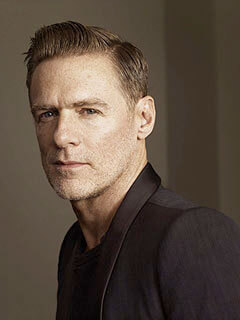Adams works as a photographer as well as musician, aside from being published in British
Vogue, L'uomo Vogue,
Harper's Bazaar,
Esquire, Interview magazine and i-D, among others, he has also shot advertising campaigns for Guess Jeans, Sand, Converse, Montblanc, John Richmond, Fred Perry, and more recently for Escada.
He has won Lead Awards twice in Germany for his fashion work, most recently June 2012 and previously in 2006. Other photographic endeavours include founding the art fashion Zoo Magazine, based in Berlin, Germany for which he shoots for regularly.
His first book of photos will be released by Steidl in 2012 entitled
Exposed. Previous published collaborations include;
American Women June 2005, for Calvin Klein in the United States; proceeds from this book went to Memorial Sloan–Kettering Cancer Center in New York City for their breast cancer research for programs, and Made in Canada December 1999 for Flare Magazine in Canada; proceeds went to the Canadian Breast Cancer Foundation. Both books were dedicated to his friend Donna, who died of the disease.
As a photographer, Adams has worked with many of his musical peers, including Lana Del Rey, The Who, Sting, Shania Twain, Mick Jagger, Arcade Fire, Ray Charles, Tina Turner, Rod Stewart, Robert Plant, Take That, Joss Stone, Plácido Domingo, Sarah McLachlan, Celine Dion, Billy Idol, Moby, Lindsay Lohan, Amy Winehouse, Annie Lennox, Peter Gabriel, Bryan Ferry, Lenny Kravitz, Die Antwoord, and Morrissey to name a few. On 27 November 2000 Adams played onstage with The Who at the Royal Albert Hall. A DVD of the concert was issued. Adams photographed the band and his photos appear in the DVD booklet.
In 2002, Adams was invited, along with other photographers from the Commonwealth, to photograph Queen Elizabeth II during her Golden Jubilee; one of the photographs from this session was used as a Canadian postage stamp in 2004 and again in 2005 (see Queen Elizabeth II definitive stamp (Canada)), another portrait of both Queen Elizabeth II and Prince Philip is now in the
National Portrait Gallery in London.
Adams supports the
Hear the World initiative as a photographer in its aim to raise global awareness for the topic of hearing and hearing loss. He photographed Michael J. Fox and Tatjana Patitz in the 2011 Carl Zeiss AG company calendar in New York City in the summer of 2010. The focus was about the size difference of the subjects in a comedic presentation. In 2011, Adams provided the cover art for
Lioness: Hidden Treasures, a posthumous release by Amy Winehouse.
Source: Wikipedia
Rock Icon Bryan Adams' lifelong interest in photography turned into a vocation when he began shooting for fashion magazines and advertisers more than a decade ago. But it's not all models and celebrities: He most recently turned his lens on 40 British soldiers returning from Iraq and Afghanistan. His series
Wounded: The Legacy of War, the subject of a 2013 book from Steidl and an exhibit at London’s Somerset House on display this month through Jan. 25, showcases the brutal (and all too common) injuries incurred in battle.
"I didn't like the fact that people were getting so badly hurt, so many people were killed, were displaced, forgotten. This is my statement," says Adams, 55. On the legacy of the images, he says,
"I hope [people] realize that these guys made an incredible sacrifice. War is disgusting and this is the result of what happens when we decide to beat each other up."Source: Billboard
